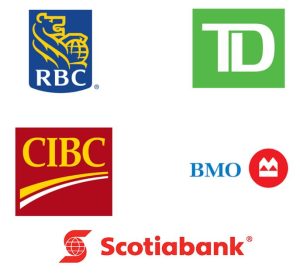
When I was referring to the Toronto Star report back in August, regarding interest rates causing indebtedness to outrun payments made by homeowners, little did I realize how much has been made of this in the major media, although it isn’t as front-and-center as one would expect. There is even a name for this endgame of indebtedness: negative amortization.
Negative amortization happens when you rack up a significant debt on your credit card, then decide to only pay the minimum payment that month. This payment is not usually enough to offset the interest that was added in the same month, so your minimum payment still results in your debt increasing.
Getting back to mortgages, if you take out a mortgage to purchase a property after a certain amount of money down, you eventually should be able to pay it off in 20 to 25 years. You normally pay mostly interest first, then at some point this flips over and you end up paying mostly principal.
But with negative amortization (called negam for short), the payment on the loan is less than the interest charged during the same period, causing interest – and as a reult your entire debt – to balloon over time, despite the fact that you are making regular payments.
Home ownership is something that most people look to as the largest investment they will ever make in their lives. Home owners who find their loans are now negatively amoritized face losing equity in their home, and the prospect of the banks effectively becoming their landlords, enslaving their customers in debt.
Investors often negotiate such a negam mortgage when they plan to sell later at a higher price. The strategy is to pay a low monthly payment ahead of the 5 year limit on speculation that the house will sell at a higher price. Of course, this is risky, as market downturns can turn projected profits into actual losses.
For average homeowners, negam can come in degrees. For example, due to interest rate hikes, the fixed payments can become almost all interest, with only less than $50 to pay off the principal. This causes the amortization period to possibly go from 25 years to 50 years. This has actually happened to some home owners, and is becoming increasingly common. Homeowners are now looking at the prospect of working well past when they planned to retire to service their mortgage. This is not exactly negam, because there will come a time when the interest will be paid off — but it is so far into the future as be considrered a form of rent where the landlord is not you, it is the bank.
A recent report by the Bank of Canada says that there is some $130 billion tied up in some form of negam loans, stretching out the payments to 35, 40, or as much as 75 years. 1 in 5 Canadian homeowners face these negam loans, and last month the OSFI put in place guidelines it has been proposing since last July to stem the growing tide of loans falling into negam territory. Banks themselves report that the number of loans with amoritization periods longer than 35 years range from 18% to 24% for their clients.
How did we get here? In my lifetime, the current prime interest rate I see from The Bank of Canada right now is 7%, which really isn’t that high. We have seen worse in the late 1970s and early 1980s (into the high teens), and negative amortization was still almost unheard-of. What is different these days, and what has some home owners panicking is the price of housing itself, which has ballooned several hundred percent since those decades to over a million dollars on average in the Greater Toronto Area.
Houses still sell for over 1 million dollars on average in the GTA, even after owners are reselling their homes at significant losses, losing as much as $400K in some cases, in part due to owners’ inability to afford their mortgages, and re-entering the rental market. And now the rental market has become saturated. Rents are increasing with increasing demands on fewer available apartments, as rentals have not been built on any significant scale in the GTA since around the late 1990s, favouring condominiums.
Just a few years ago, money was cheap, meaning that the interest rate for borrowing was 0.25% prime, as it had been for much of 2010, up to 2022. Customers were likely given the impression that this would last for the entire lifetime of their mortgage. And if they had to ride out high interest rates, no one was talking about 7% prime (which could retail at about 9% interest to the customer at the level of banks). No one was talking about their mortgage payments going from $2500 to over $4000 per month.
Currently there are over 100,000 customers in such a position (according to a report from CBC Television), and that is only counting CIBC. There are also four other major banks that are allowed to borrow at prime from the Bank of Canada, and it is likely that the real number of customers in that position is many times greater.
Visits: 628
